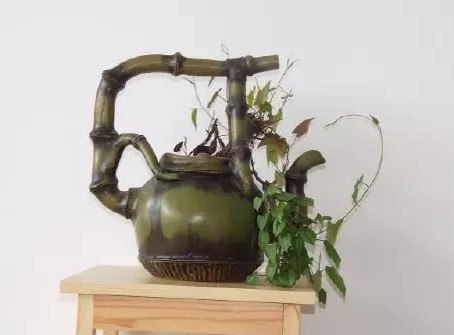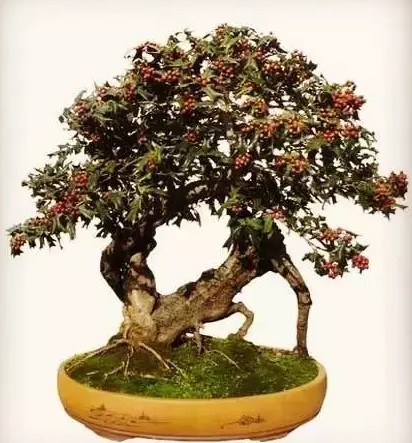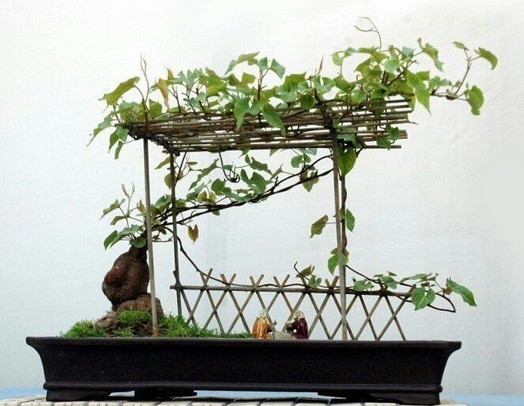Pruning skills of Polygonum multiflorum bonsai
Many people know that Polygonum multiflorum is a medicinal plant, which has many functions, such as tonifying essence and blood, black hair, strengthening muscles and bones, tonifying liver and kidney and so on. In fact, it is also a good ornamental plant, which can make use of its simple roots, rich variety, luxuriant branches and beautiful leaves to make bonsai.

Polygonum multiflorum is a perennial twining vine of Polygonum multiflorum in Polygonaceae. It has fallen leaves in winter in the north and evergreen in the south where the climate is warm. The plant has purple-brown or reddish-brown tuberous roots, which are mainly oval in shape, but also have other shapes. The vines are 2-5m long, much branched, lower lignified, leaves long ovate or ovate, apex pointed, both sides rough, entire, green or white veined. Panicle with white florets, blooming in summer.
When the stem vine grows to 30 cm after the planting seedling survives, it is necessary to use branches, bamboo poles and other things to build a frame and bind the vine. Some do not set up a vine, intercropping corn and other tall stalk crops. If the stem is too overgrown, part of the leaves will be cut off in July, ventilated and exposed to light to facilitate root growth. In general, only one vine is left per plant, and the extra seedlings should be cut off and branches will not be retained until more than 1 meter, which is conducive to the ventilation and light transmission of the lower layer of the plant. If the growth is too prosperous, you can make an appropriate entry. Daejeon production is pruned 5 times 6 times a year.
For the formed Polygonum multiflorum bonsai, the basin can be turned every 1 ~ 2 years in spring, cutting off the overlong branches and vines, retaining only its basic skeleton, and cutting off the rotten roots, so as to promote the germination of new roots. the basin soil can be mixed with garden soil, sand, slag and so on.
Time: 2019-06-13 Click:
- Prev

The shaping of bonsai with Chinese wolfberry
Chinese wolfberry, also known as cat thorn, wolfbone holly, holly belongs to small evergreen trees or shrubs. The bark is gray and slippery, with dense branchlets. Simple leaves alternate, elliptic moment round, leathery, with 5 hard spines, bright surface, dark green. Flowers yellowish green, born in axils of leaves. Drupe globose, bright red
- Next

How to shape the bonsai of Polygonum multiflorum
Although Polygonum multiflorum has large tuber roots, the vines are so weak that they can hardly form an obvious trunk, so the method of replacing the trunk with tuber roots can be considered when modeling. It can also be modeled as an ornamental stone by making use of the characteristics of tuber hypertrophy and resembling a stubborn stone, which can be planted not only by a single plant but also by several combinations.
Related
- Fuxing push coffee new agricultural production and marketing class: lack of small-scale processing plants
- Jujube rice field leisure farm deep ploughing Yilan for five years to create a space for organic food and play
- Nongyu Farm-A trial of organic papaya for brave women with advanced technology
- Four points for attention in the prevention and control of diseases and insect pests of edible fungi
- How to add nutrient solution to Edible Fungi
- Is there any good way to control edible fungus mites?
- Open Inoculation Technology of Edible Fungi
- Is there any clever way to use fertilizer for edible fungus in winter?
- What agents are used to kill the pathogens of edible fungi in the mushroom shed?
- Rapid drying of Edible Fungi

